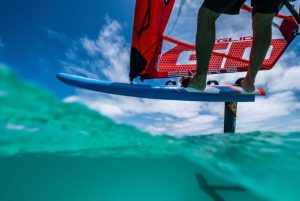Water Surfing Boards: Which One to Choose?
Selecting the right water surfing board is crucial for every surfer’s journey, whether you’re about to paddle out for the first time or looking to add a new board to your quiver. With a multitude of shapes, sizes, and designs available, making the right choice can significantly impact your performance and enjoyment on the waves. Here, we break down the essential factors to consider when choosing among the diverse range of water surfing boards.

Shortboards are the go-to for experienced surfers seeking maneuverability and speed. Typically ranging from 5’6″ to 6’4″ in length, they’re designed for quick turns and high-performance surfing.
Longboards, measuring from 8′ to 11′, offer stability and ease of catching waves, making them ideal for beginners or those who enjoy a more laid-back surfing style.
Fish boards stand out with their distinctive swallow tail and wider, thicker design. They are great for small to medium waves, offering a blend of speed and stability.
Funboards, or mini-malibus, range from 6’6″ to 8′ and are a versatile choice for intermediates, striking a balance between the maneuverability of shortboards and the stability of longboards.
Hybrid boards combine elements from different board types, offering a unique blend of features for various wave conditions.
Volume and Size: Key for Matching Your Skill Level
Volume, expressed in liters, is a critical factor in choosing a board. It influences buoyancy and stability, directly affecting your ability to paddle, catch waves, and maintain balance. Beginners should opt for higher volume boards for easier wave catching, while advanced surfers might prefer lower volume boards for better control and maneuverability.
Material Matters
Foam boards, known for their buoyancy and durability, are excellent for beginners. They’re forgiving in the event of falls and are less likely to cause injuries.
Epoxy boards are lighter and more durable than traditional fiberglass, offering a good balance between performance and ease of use for surfers at all levels.
Fiberglass boards are the standard for performance surfing, offering responsiveness and speed for experienced surfers willing to handle their fragility.
Choosing Based on Wave Conditions
Your local wave conditions play a significant role in your board choice. Larger, softer boards can make the most of small, weak waves, while shorter, more agile boards are suited for powerful, fast-breaking waves. Understanding your local break will guide you toward the most suitable board type.
Personal Goals and Preferences
Reflect on what you aim to achieve in your surfing. Are you looking to cruise and enjoy the scenery, or are you aiming to aggressively carve and perform aerial maneuvers? Your ambitions should align with the type of board you choose, ensuring it complements your desired surfing style.
Sustainability and Eco-friendliness
The surf industry is increasingly focusing on sustainability, offering boards made from recycled materials and utilizing eco-friendly manufacturing processes. Choosing a board that aligns with these values not only benefits the environment but also supports the industry’s move towards greener practices.
For surfers navigating the vast sea of options, the water surfing boards available today offer something for every preference and skill level. Whether you prioritize stability and ease or speed and agility, there’s a board out there that’s just right for you. Remember, the best board is the one that makes you feel confident in the water, inspires progression, and, most importantly, maximizes your fun on the waves.